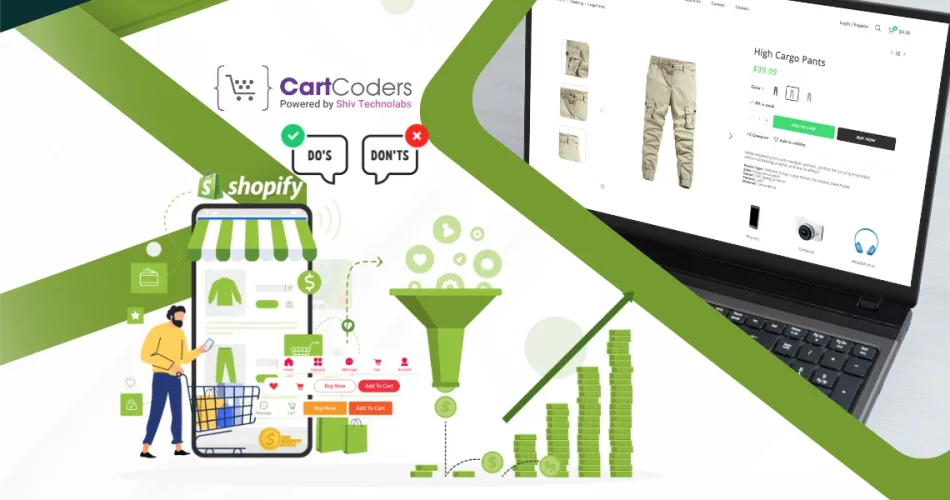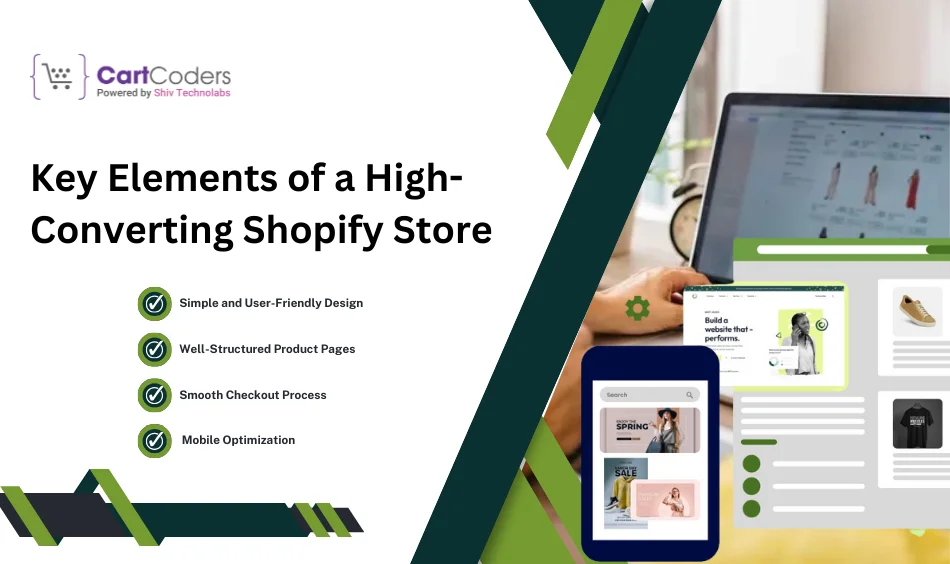Custom Engagement Solutions
Unlock tailored solutions with a free, no-obligation strategy session.
Expert Developers & Engineers on Demand
Scale Your Team with Skilled IT Professionals
Expert Guidance for Digital Transformation

A Shopify store should not only attract visitors but also turn them into paying customers. A poorly structured store leads to high bounce rates, abandoned carts, and lost sales. Following Shopify Store Best Practices helps in creating a platform that meets customer expectations while avoiding common pitfalls.
This guide outlines Shopify Store Setup Guidelines to build a professional, user-friendly store. It also highlights Shopify Store Mistakes to Avoid, ensuring a smooth shopping experience.

A Shopify store should be designed to guide visitors toward making a purchase. Every element plays a role in increasing conversions and reducing cart abandonment.
A clean layout helps customers find products easily. The homepage should feature clear categories, high-quality images, and readable fonts.
Product pages should provide clear details, multiple images, and customer reviews to build trust. Pricing, stock availability, and shipping details should be transparent.
A fast, hassle-free checkout increases sales. Multiple payment options and a guest checkout feature make purchases easier.
A Shopify store should function well on all devices. Responsive design, fast-loading pages, and easy navigation improve mobile shopping.
Each of these elements plays a crucial role in Optimizing Shopify Store for Sales and avoiding Common Shopify Store Pitfalls.
Also Read: How to Build a Shopify Store for B2B Sales?

New Shopify store owners often overlook key factors that impact sales. Issues like slow-loading pages, unclear product descriptions, and complicated checkouts drive customers away. By following Shopify Store Best Practices and avoiding Common Shopify Store Pitfalls, businesses can create a smooth shopping experience that boosts conversions.
The first impression of an online store determines whether visitors stay or leave. A cluttered, confusing layout drives customers away, while a clean design improves retention.
A well-structured store makes navigation effortless for customer satisfaction.
Also Read: 20 Common UX Mistakes to Avoid in Shopify Store Development
A well-organized product page convinces customers to buy. Poor descriptions or hidden details can lead to cart abandonment.
Also Read: Shopify Product Page Design Audit: Best Practices for CRO
A long or complicated checkout process increases cart abandonment rates. The payment experience should be quick and hassle-free.
A simple checkout process makes purchases smooth and reduces cart abandonment.
With most shoppers using mobile devices, an online store must function flawlessly on all screen sizes. A poorly optimized site can drive away potential buyers.
Even the best-designed store will struggle without a solid marketing approach. Customers need to find the store easily, and the right messaging should encourage them to make a purchase.
Also Read: How to Improve Your Shopify Store’s Search Engine Rankings?
A responsive support system builds trust and keeps customers coming back. Poor communication leads to frustration and negative reviews.
Also Read: Your Dream Shopify Store, Designed by Expert Shopify Designers
Without tracking key metrics, it’s impossible to understand what’s working and what needs improvement. A data-driven approach helps increase sales by refining strategies over time.
Also Read: Create Shopify Store: The Ultimate Guide 2024
Launching a Shopify store requires a solid foundation to attract customers and drive sales. CartCoders specializes in Shopify store setup development, providing tailored solutions for businesses of all sizes. From custom design and product setup to seamless payment integration, their experts ensure a smooth, sales-ready store.
With a focus on user-friendly layouts and optimized performance, CartCoders’ Shopify store setup services help businesses avoid Common Shopify Store Pitfalls while following Shopify Store Best Practices. Whether you’re starting fresh or upgrading an existing store, their team ensures a hassle-free launch that enhances your online presence.
Also Read: Hire Someone to Set up Shopify Store | Should I Pay Someone?
A high-converting Shopify store requires careful planning in marketing, customer service, and performance tracking. Following Shopify Store Best Practices helps create a smooth shopping experience, attract visitors, and turn them into loyal customers.
Avoiding Shopify Store Mistakes to Avoid ensures businesses don’t lose sales due to poor execution. Regular performance analysis and strategic improvements help maintain steady growth and customer satisfaction.
For a hassle-free Shopify store setup, CartCoders offers expert solutions tailored to business needs. Our team ensures a well-structured store that follows Optimizing Shopify store for Sales strategies while avoiding Common Shopify Store Pitfalls. We help businesses to create an efficient, high-performing online store that drives success. Get expert Shopify store development servicesfrom CartCoders!
Projects delivered in 15+ industries.
95% retention rate, building lasting partnerships.
Serving clients across 25+ countries.
60+ pros | 10+ years of experience.